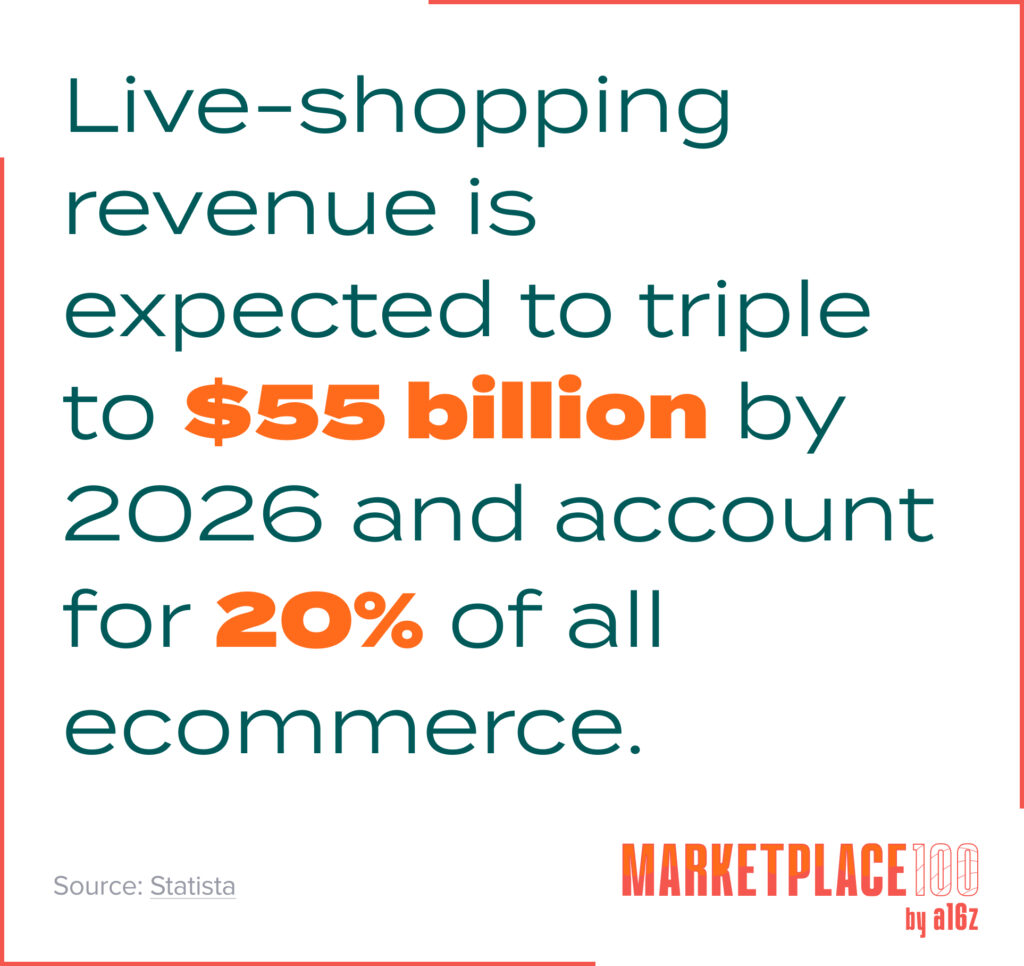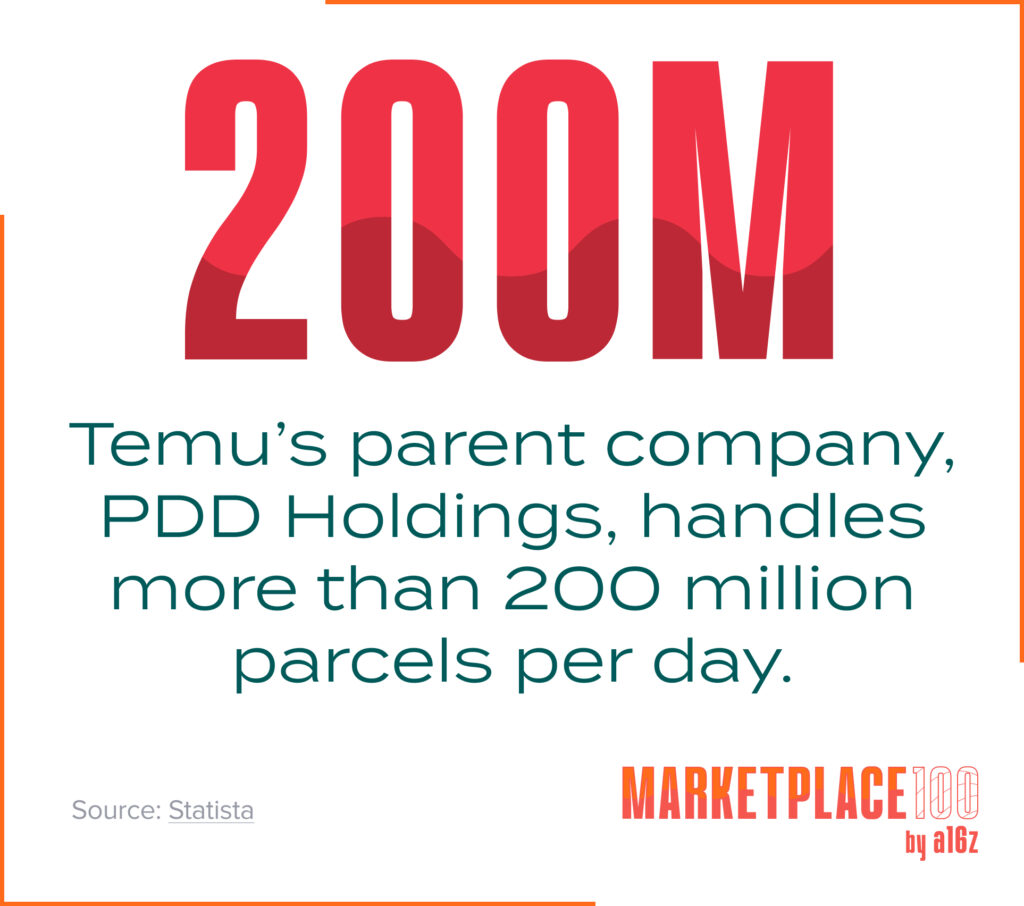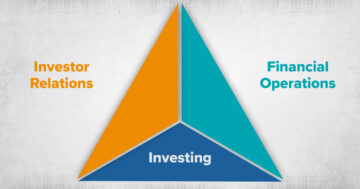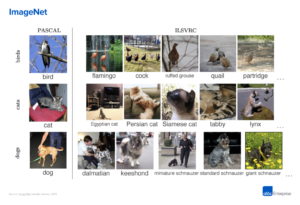
After a Covid-induced spike in ecommerce (in which 10 years of growth were crammed into three months), we seem to have settled back into a more normal balance between brick-and-mortar and online stores (a split of approximately 85% brick-and-mortar vs. 15% online). However, this doesn’t mean consumers are shopping in the same places.
Of the three new entrants to break into the top 15 this year, two are in the shopping category. Static ecommerce sites are making way for more interactive, curated, and even gamified digital shopping experiences.
After jumping 73 spots last year, live-shopping app Whatnot (where sellers hawk their wares in video shows) cracked the top 10 at #9. Though Whatnot’s original focus was on collectibles, they’ve since expanded into over a dozen other product categories, including sneakers, vintage clothes, jewelry, and more. The platform has become a place for live sellers to build businesses: more than 100 users raked in close to a million dollars each on the platform in 2022. Whatnot ascent may be a harbinger of what’s to come in U.S. ecommerce: after all, live-shopping is already a $137 billion a year industry in China.
Just a few spots down, newcomer SSENSE debuts at #11. SSENSE is a fashion marketplace for consumers to discover items from more than 700 luxury and independent retailers. Amid the death of the department store, consumers are looking for a digital home to discover emerging brands—or find items from known brands at compelling discounts. SSENSE caters mostly to millennial and Gen Z shoppers, and 80% of their users are between the age of 18 and 40.
Thirty-eight percent of all Marketplace 100 newcomers are in the shopping category this year, compared to only 5% last year. Other than SSENSE, the highest ranking freshmen are precious metals marketplace Apmex (#12), custom design platform Zazzle (#20), and electronics resale site BackMarket (#34).
Top Categories Among Marketplace 100 Newcomers
Another breakout ecommerce company is Temu, the discount-focused shopping app. Because it is owned by the publicly traded Chinese firm Pinduoduo, Temu wasn’t eligible for inclusion in the Marketplace 100. Still, the app’s incredible growth over the past six months makes its business model one to watch.
Temu Takes Off
Monthly GMV

Since launching in September 2022, Temu quickly became one of the top-downloaded apps across the Apple App and Google Play Stores. The app represents a new kind of AI-powered, social commerce experience for the U.S., inspired by shopping trends in Asia. In Temu’s hyper-curated algorithmic feed, consumers are served personalized recommendations of discounted items from thousands of merchants. Shopping is literally gamified, and users receive credits for inviting friends and engaging daily.
If we annualized Temu’s first four months of data—and if it were private—the company would have cracked the top 10 of this year’s Marketplace 100.
Temu is now actively following TikTok’s marketing-heavy U.S. launch strategy. Like TikTok, it has a deep-pocketed Chinese parent company willing to invest huge sums into customer acquisition so it can continue growing outside the Chinese market. And like TikTok (as well as fellow Chinese shopping app SHEIN), it also needs a large number of users for its recommendation algorithm to work.
- SEO Powered Content & PR Distribution. Get Amplified Today.
- Platoblockchain. Web3 Metaverse Intelligence. Knowledge Amplified. Access Here.
- Source: https://a16z.com/marketplace-100/
- :is
- 10
- 100
- 15%
- 2022
- 7
- a
- a16z
- acquisition
- across
- actively
- After
- algorithm
- algorithmic
- All
- already
- Amid
- among
- and
- annualized
- app
- Apple
- Apple App
- approximately
- apps
- ARE
- AS
- asia
- At
- back
- Balance
- BE
- because
- become
- between
- brands
- Break
- breakout
- build
- business
- business model
- businesses
- by
- CAN
- categories
- Category
- China
- chinese
- chinese firm
- Close
- clothes
- collectibles
- come
- company
- compared
- compelling
- Consumers
- continue
- cracked
- Credits
- curated
- custom
- custom design
- customer
- daily
- Debuts
- Department
- Design
- digital
- discounted
- discounts
- discover
- Doesn’t
- dollars
- down
- dozen
- each
- ecommerce
- Electronics
- eligible
- emerging
- engaging
- entrants
- Even
- expanded
- experience
- Experiences
- Fashion
- fellow
- few
- Find
- Firm
- First
- Focus
- following
- For
- For Consumers
- friends
- from
- Gen
- Gen Z
- Google Play
- Growing
- Have
- Hawk
- highest
- Home
- However
- HTML
- HTTPS
- huge
- IMF
- in
- Including
- inclusion
- independent
- industry
- inspired
- interactive
- Invest
- inviting
- IT
- items
- ITS
- jpg
- Kind
- known
- large
- Last
- Last Year
- launch
- launching
- like
- live
- looking
- Luxury
- MAKES
- Making
- Market
- marketplace
- Merchants
- Metals
- Millennial
- million
- million dollars
- model
- months
- more
- needs
- New
- Newcomers
- number
- of
- on
- ONE
- online
- original
- Other
- outside
- owned
- parent company
- past
- percent
- Personalized
- Place
- Places
- platform
- plato
- Plato Data Intelligence
- PlatoData
- Play
- plus
- Precious
- Precious Metals
- Product
- publicly
- quickly
- Ranking
- receive
- Recommendation
- Recommendation Algorithm
- recommendations
- represents
- retailers
- s
- same
- Sellers
- September
- Settled
- SHEIN
- Shopping
- Shows
- since
- site
- Sites
- SIX
- Six months
- Sneakers
- So
- Social
- spike
- split
- Still
- stores
- Strategy
- takes
- The
- their
- this year
- thousands
- three
- tiktok
- to
- top
- Top 10
- traded
- Trends
- u.s.
- users
- Video
- VOX
- vs
- Watch
- Way..
- WELL
- which
- willing
- Work
- would
- year
- years
- zephyrnet













